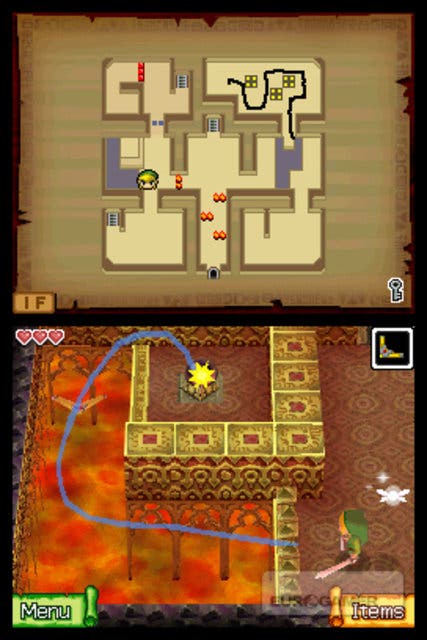DS - 2007's Most Wanted
The best things yet to come in small packages.
It's hard to think back to a time when the all-consuming success of Nintendo's DS was in any doubt. But, as with so many new and different things, videogame consumers at first struggled to put their faith in what appeared to be an unfocused hotchpotch of whimsical design ideas.
The first iteration of the machine was ill-served by its chunky, plasticity Fisher-Price build quality and with its strange dual screen set-up and on-board microphone it looked as though Nintendo had spent its money in all the wrong places. Less generous commentators claimed the company was consolidating its position as out-of-touch toymakers offering little more than a gimmicky toy. Had a mistake been made in ignoring consumers' perceived desire for faster, sleeker, more technically impressive handheld specifications (those the rival the PSP so eloquently embodied)?
For a while, with few games arriving for the system, and with many of those that did tacking the hardware's new functionality onto established mechanics in pointless or uncreative ways, it appeared as though the detractors were correct: the DS was another Nintendo handheld curio, a Virtual Boy for the 21st century.
But then came Brain Training, Animal Crossing: Wild World, Nintendogs, New Super Mario Brothers, Mario and Luigi: Partners in Time, Elite Beat Agents, Slitherlink and Phoenix Wright, and a hundred other innovative, inventive, exciting and soulful games that transformed the system from interesting novelty to absolute necessity.
Since those early days, the machine's steady, assured dominance - bolstered by the Lite hardware redesign - over the three global territories has been unstoppable, culminating in last week's announcement from Chart Track that the DS has overtaken the PC and PS2 as having the highest current market value of all videogame systems in the UK for the first time.
The system has revitalised an ailing Japanese videogame market (indeed, nine of the ten games in this list originated in Japan), a country that's accounted for 18 million of the DS' total 47.27 million hardware sales worldwide. Last October Nintendo announced a 20.5 per cent rise in net profit forecast - attributed almost entirely to the handheld. It's a success story of heart-warming proportions and one that's in no small part thanks to an astonishing line-up of software that appeals to a broad demographic.
In a sense, then, the system has little to prove from here on out but glancing ahead over the next year's release schedule - and there's an impressive number of enticing title that seem to be further broadening the machine's remit. Here are just some of them. Enjoy.
The Legend of Zelda: Phantom Hourglass
- Release Date: October 2007
- Gamepage
- Screenshots

It seems a little superfluous to try to try to add anything to this week's thorough exposition of the latest Zelda game from our own Oli Welsh. As he points out, no matter how impatient you might be feeling, non-Japanese speakers should wait for the Western version or else miss out on much of the subtlety, humour and flavour that makes the gives the game its inimitable character.
A direct sequel to the GameCube's Wind Waker, both games share many attributes, character and locations. Phantom Hourglass is set several months after its predecessor and features a cel-shaded Link on a quest to rescue his pirate friend Tetra. Featuring seven dungeons (strung together in a new way for the series) the game's viewed from a top-down perspective like the classic 2D titles but showcases fully 3D character models and environments.
Unlike some of the more recent Zelda games Phantom Hourglass places a heavy emphasis on self-depreciating humour and this, combined with the game's various mechanical inventions and overhauls had Welsh touting it as "the freshest Zelda in years, and the most complete game on the DS."

